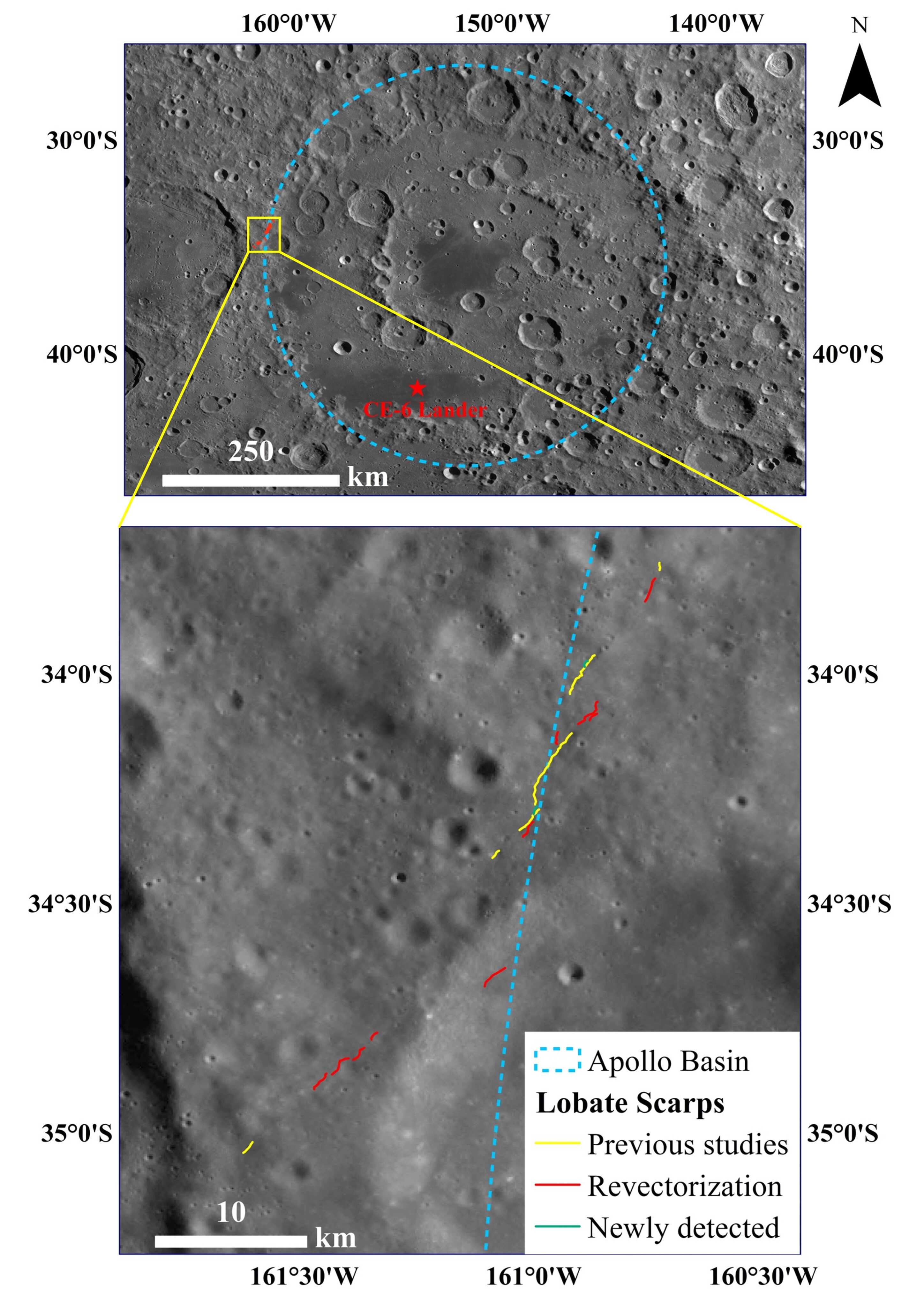2025-04-29 中国科学院(CAS)
 Spatial distribution of lobate scarps at the northwest of the Chang’e-6 landing area shown on the LROC WAC image. (Image by AIR)
Spatial distribution of lobate scarps at the northwest of the Chang’e-6 landing area shown on the LROC WAC image. (Image by AIR)
<関連情報>
- https://english.cas.cn/newsroom/research_news/tech/202505/t20250508_1042818.shtml
- https://www.sciencedirect.com/science/article/abs/pii/S0019103525001095
生成的敵対ネットワーク(GAN)ベースのアプローチで生成された高解像度DEMを用いたアポロ盆地西縁の葉状瘢痕の特性評価 Characterization of lobate scarps at the western rim of the Apollo basin using high-resolution DEMs generated using generative adversarial network (GAN) based approach
Xijian Li, Zongyu Yue, Man Peng, Kaichang Di, Biao Wang, Yexin Wang, Gregory Michael, Congzhe Wu, Jianzhong Liu
Icarus Available online: 21 March 2025
DOI:https://doi.org/10.1016/j.icarus.2025.116562
Highlights
- A total of 18 lobate scarps have been analyzed, of which 12 are newly detected or revectorized.
- The ages of these scarps range from 52.8 to 74.9 Ma.
- GAN-based high-resolution DEMs have been validated to enable precise morphological analysis of scarps.
- Comparative analysis of dating results highlights the applicability of different methods.
- Integration of Chang’e-6 sample data supports the Initially Totally Molten (ITM) model.
Abstract
Chang’e-6 is the first sample-return mission from the lunar farside and has returned samples from the landing site within the Apollo basin on June 25, 2024. Lobate scarps have been identified approximately 300 km northwest of the Chang’e-6 landing site (and at western rim of the Apollo basin). The distribution and morphological characteristics of lobate scarps are crucial for understanding the lunar geological history of the landing area. In this research, we have analyzed the spatial distribution and formation age of lobate scarps at western rim of the Apollo basin. The morphology, dynamical models, and formation ages of lobate scarps are investigated through Mohr-Coulomb measurement and crater size-frequency distribution measurements (CSFD). We generated high-resolution digital elevation models by deep learning method using Lunar Reconnaissance Orbiter Camera (LROC) Narrow Angle Camera (NAC) imagery and Selenological and Engineering Explorer (SELENE) and Lunar Orbiter Laser Altimeter (LOLA) Digital Elevation Model (SLDEM), which enabled the study of lobate scarps in areas lacking NAC DTM coverage, and their accuracy were thoroughly validated. The displacement-length ratios of the lobate scarps are calculated, with an average of approximately 3.80 %. By calculating the morphological parameters of lobate scarps, inferring their formation ages, and studying their spatial distribution, we find that these lobate scarps are distributed in the highlands nearby the Apollo basin edge. They were formed under horizontal compressive stresses exceeding 400 MPa during the last 80 Ma, which is consistent with the initially totally molten (ITM) model. This finding is further supported by cross-validation with the 238U/204Pb ratios from lunar far-side samples by the Chang’e-6 mission, challenging the notion that the lunar magma ocean (LMO) can prolong magmatic activity through KREEP.



